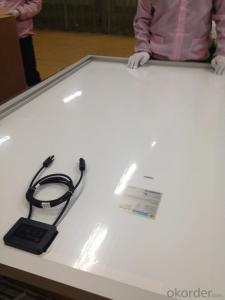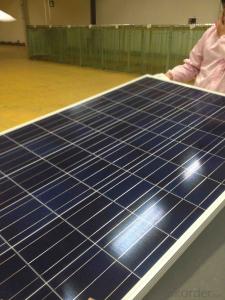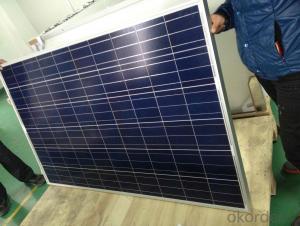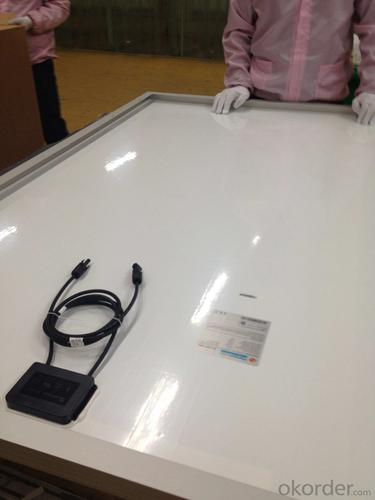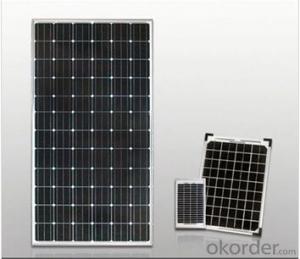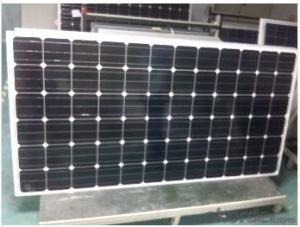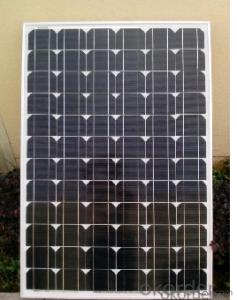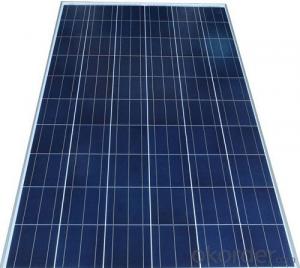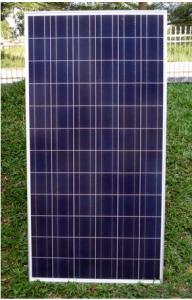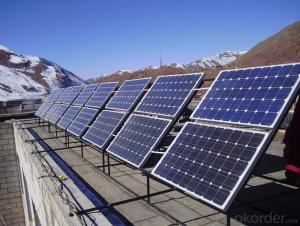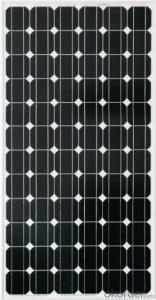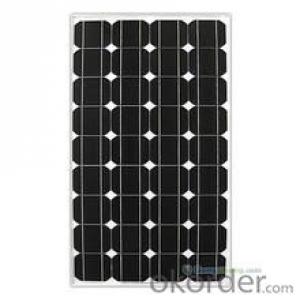Hidden Polycrystalline Solar Panels-210w-Tier 1 Manufacturer High Quality
- Loading Port:
- Shanghai
- Payment Terms:
- TT OR LC
- Min Order Qty:
- 10000 watt
- Supply Capability:
- 5000000 watt/month
OKorder Service Pledge
OKorder Financial Service
You Might Also Like
Product Description:
Solar Polycrystalline Series Panels
Introduction of Polycrystalline Solar Panels
CNBM Solar photovoltaic (PV) Panel is designed for large electrical power requirements. It is the optimal choice for both on-grid and off-grid power systems. CNBM Solar panel offers high performance of power per square foot of solar array. Polycrystalline silicon(c-Si): often made using the Czochralski process. Single-crystal wafer cells tend to be expensive, and because they are cut from cylindrical ingots, do not completely cover a square solar cell module without a substantial waste of refined silicon. Hence most c-Si panels have uncovered gaps at the four corners of the cells.
Characteristics of Polycrystalline Solar Panels
I Solar Cell : High efficiency crystalline solar cell. Even if under the weak light, the solar module can produce maximum power output.
II Tempered glass (toughened glass): Anti-reflecting coating and high transmission rate glass increase the power output and mechanical strength of solar module.
III EVA and TPT: Using high quality EVA and TPT to prevent destroying and water.
IV AI frame: Without screw, corner connection. 6 holes on the frame can be installed easily.
V Junction box: Multi function junction box with water proof.
VI Long lifetime: ≥25 years; Less power decrease
VII Good performance of preventing from atrocious weather such as wind and hails.
VIII Resisting moisture and etching effectively, not effected by geology.
Standard Test Conditions of Polycrystalline Solar Panels
The opto-electrical specifications shown below are stabilized values being measured at Standard Test Conditions, Irradiance: 1000W/m2, Spectrum: AM1.5 at 25°C, The info below is subject to manufacturing tolerances. Where appropriate minutes of measurement are available and are used for the dimensioning of the installation.
Advantages of Polycrystalline Solar Panels
A. Professional Manufacturers
B. A grade solar cell with Positive tolerance poweroutput.
C. High Conversion Efficiency , High transmission rate , low iron tempered Anti-reflecting/coating film 3.2mm glass
D. Anti-aging & high visosity EVA
E.High frame resistant & Double-sided fluorine TPT
F. Anodized aluminum alloy high thickness frame
G. 3 or 6 bypass diodes , 90mm 4m2 cable , MC4 connectors & waterproof junction box
H. Long life, Easy installation, high wind & hail impact resistance
I. Be resistant to atmospheric exposure & effects of de-lamination
J. ISO9001:2008/ISO14001:2004 / TUV/ CE / CEC/ IEC/EN61215 IEC/EN61730/CHUBB INSURANCE
Characteristics of Polycrystalline Solar Panels
Max Power Voltage Vmp (V) | 27.3V | 27.6 V |
Max Power Current Imp (A) | 7.7A | 7.8A |
Open Circuit Voltage Voc (V) | 33.3V | 33.8V |
Short Circuit Current Isc (A) | 8.4A | 8.5A |
Max Power Pm (W) | 210W | 215W |
Temperature Coefficient of Cells
NOCT | 45℃±2℃ |
Temperature Coefficients of Isc (%/℃) | 0.0825 |
Temperature Coefficients of Voc (%/℃) | -0.4049 |
Temperature Coefficients of Pmp (%/℃) | -0.4336 |
Mechanical Data Solar Polycrystalline Series
Power | 210W/215W |
Dimension | 1482×992×40mm |
Weight | 17.1kg |
Tolerance | ±3% |
The dimension of the modules can be changed according to the demand of clients Limits.
Operating Temperature | –40 °C to +85°C |
Storage Temperature | –40 °C to +85°C |
Max System Voltage | 700V |
Guarantee Solar Polycrystalline Series Panels
Products Guarantee | 10 yrs free from defects in materials and workmanship |
Performance Guarantee | No less than 90% within 10yrs and no less than 80% within 25yrs |
Certificates | IEC, ISO, TUV, CE |
Package of Solar Polycrystalline Series Panels
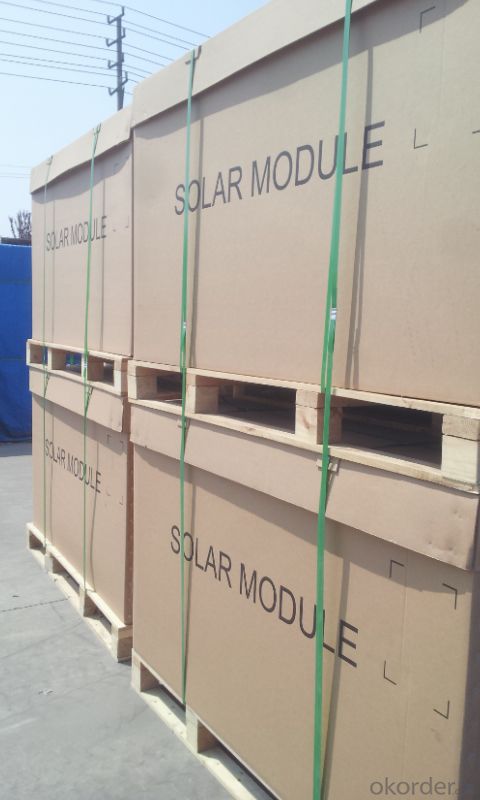
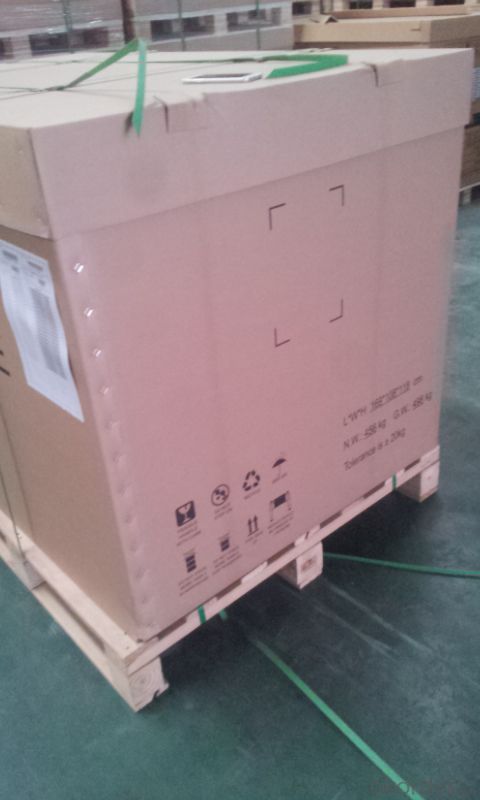
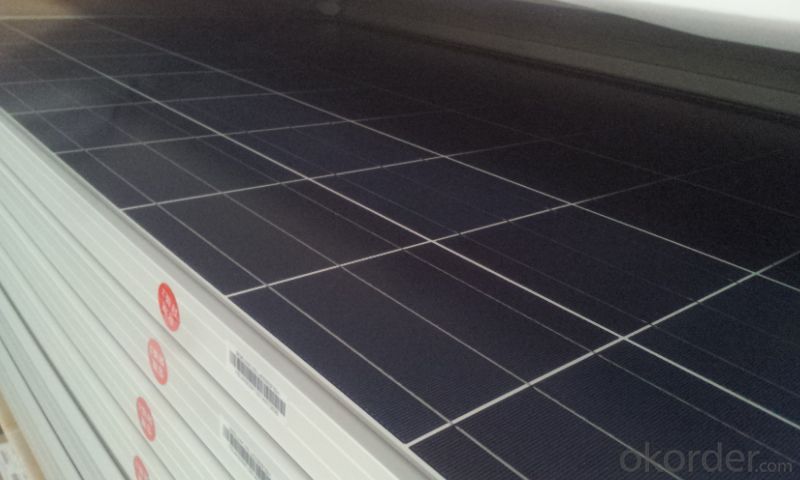
FAQ
We have organized several common questions for our clients,may help you sincerely:
1. What’s price per watt?
A: It’s depends on the quantity, delivery date and payment terms of the order. We can talk further about the detail price issue. Our products is high quality with lower price level.
2. Can you tell me the parameter of your solar panels?
We have different series of cells with different power output, both from c-si to a-si. Please take our specification sheet for your reference.
3. How do you pack your products?
We have rich experience on how to pack the panels to make sure the safety on shipment when it arrives at the destination.
4. Can you do OEM for us?
Yes, we can do OEM for our customer. We can produce solar panels according to our customer’s dimension requirement and attach customer’s logo on it.
5. How long can we receive the product after purchase?
In the purchase of product within three working days, We can arrange the factory delivery as soon as possible. The perfect time of receiving is related to the state and position of customers. Commonly 7 to 10 working days can be served.
- Q: Are there any government incentives or tax credits for installing solar panels?
- Yes, there are government incentives and tax credits available for installing solar panels. These incentives vary by country and state, but they often include federal tax credits, grants, rebates, and state-level incentives. These incentives aim to promote renewable energy adoption and can significantly reduce the cost of installing solar panels for residential and commercial properties. It is advisable to consult local government agencies or renewable energy organizations to get specific information about incentives available in your area.
- Q: I read on CNN's website last year some company was creating a very cheap type of solar panel, that needs minimal maintenance and and has minimal glare from the sun. And the creator of the project said he one day wanted to cover every rooftop in the US with these solar panels. Seems like a good idea to me but I havent heared anything of it for a long time and I don't know what they are called... any help?
- About okorder /
- Q: i see these things all over the internet on how to make 'home made solar panels' but all of them require you to buy the solar cells and nothing tells you how to make your own. So how can you make your own solar cells?
- Found this video demonstrating the process of making home made solar cells. I do not think this method would be very practical for an off the grid home system.
- Q: Can solar panels be installed on commercial buildings?
- Yes, solar panels can be installed on commercial buildings. In fact, many businesses and organizations are increasingly opting for solar panel installations to generate clean and renewable energy, reduce energy costs, and demonstrate their commitment to sustainability.
- Q: What is the efficiency of solar panels?
- The efficiency of solar panels refers to their ability to convert sunlight into usable electricity. The efficiency can vary depending on the type and quality of the panels, but most modern solar panels have an efficiency of around 15% to 20%. However, advancements in technology have led to the development of highly efficient panels that can achieve efficiencies of up to 40%.
- Q: I want to buy a solar panel from my house and I want to know how much it costs, what I have to buy and everything I need to know
- If okorder / for the solar panel design, Do it yourself DIY cheap and best guides which you can download right away. Using all the information, it will cost you less than $200 for building and complete installation of the solar panel in your house. This will cut your energy costs by atleast 50%. Many people are feeding the grid from the extra power they generate from renewable sources of energy like wind turbines and solar panels at home. So Good Luck!
- Q: I need a solar panel which can light up 4 full loaded 5 rooms appartment houses
- good idea going solar, i would suggest doing a google search, as their are many suppliers. then you need to calculate the amount of wattage you think these apartment houses are going to require. volts x amps = watts. if you are going to be off of the power grid, then you will need a way to store excess energy during good times,( lots of sun) in order to use it during bad times ( no sun ). or see if you are able to sell your extra power back to your local power company, check because some companies do not allow this. you could even have a generator for emergencies if you go off the power grid. on final note, solar is a pretty sizable investment up front and your profits are seen mainly in the long run, but you will get energy savings immediately, but more likely those savings will go to paying off the solar panels also, you will need a converter to convert the ac (alternate current) produced by the panels into dc ( direct current ) which is used by the apartments. it will tie in to the existing electrical system in the apartments. i know germany is really pushing solar energy and they offer their citizens some pretty sweet deals to go solar. the companies are profiting from this so i would suggest looking for a supplier in germany, first. they may have better deals, or try bp (british petroeum) they have been in the solar business for awhile. i wish you success!
- Q: I am thinking of buying a 3w solar panel called the nomad 3 from goal zero. I want to charge 35Wh lithum batteries. I have heard that lithium batteries are temperatmental and without a regulated current things could get ugly.I have a couple of chargers that came with the batteries. One is a 2v car charger and another is 0-240v wall charger.Goal zero sell something called a sherpa 50, which contains rechargeable batteries and an inverster and I think they suggest that I charge my batteries indirectly through the Sherpa 50, however, the sherpa 50 is expensive at $200, and seems to have a small capacity, in addition to being extra weight that i don`t want to carry.Electronics geniuses, you are my only hope.
- If you want to energy each USB ports on the identical times, It could not be possibble. Your sun panel best provides 2.24 Watts (20V * 0.2A) of energy and you ought to deliver 2.5 Watts (5V * 0.5A) to the ports. Subtracting any losses out of your regulator(s), you are going to be method over your vigor finances. You'll want extra of a sun panel or less of a load.
- Q: Can solar panels be installed on research facilities or laboratories?
- Yes, solar panels can be installed on research facilities or laboratories. Solar panels are a viable and sustainable energy solution for these types of buildings, providing clean and renewable power. The installation of solar panels on research facilities or laboratories can help reduce their carbon footprint, lower energy costs, and contribute to a greener and more sustainable environment.
- Q: Can solar panels be used for powering agricultural irrigation systems?
- Yes, solar panels can be used to power agricultural irrigation systems. Solar-powered irrigation systems are increasingly being used in agriculture as they provide a sustainable and cost-effective solution. Solar panels convert sunlight into electricity, which can then be used to power pumps and other irrigation equipment, reducing reliance on fossil fuels and electricity grids. This approach helps farmers save on energy costs and reduces their carbon footprint.
Send your message to us
Hidden Polycrystalline Solar Panels-210w-Tier 1 Manufacturer High Quality
- Loading Port:
- Shanghai
- Payment Terms:
- TT OR LC
- Min Order Qty:
- 10000 watt
- Supply Capability:
- 5000000 watt/month
OKorder Service Pledge
OKorder Financial Service
Similar products
Hot products
Hot Searches
Related keywords
